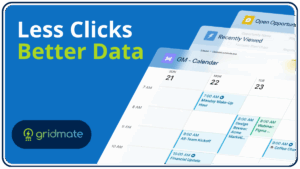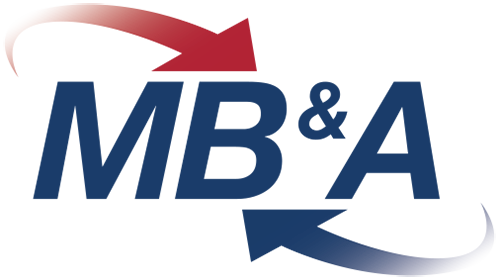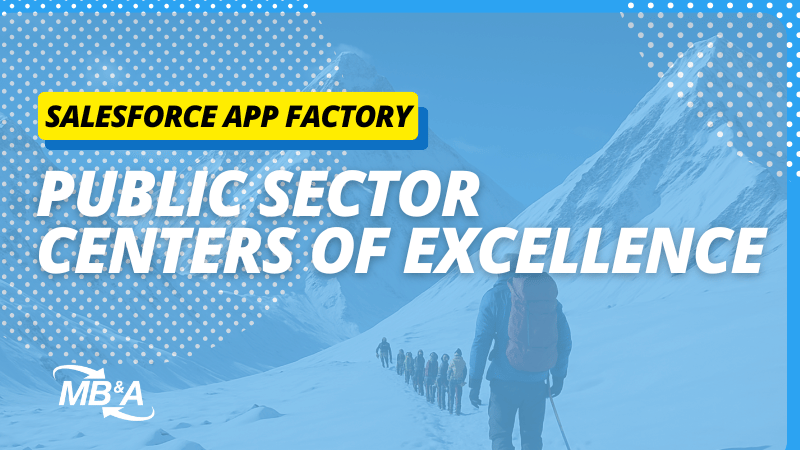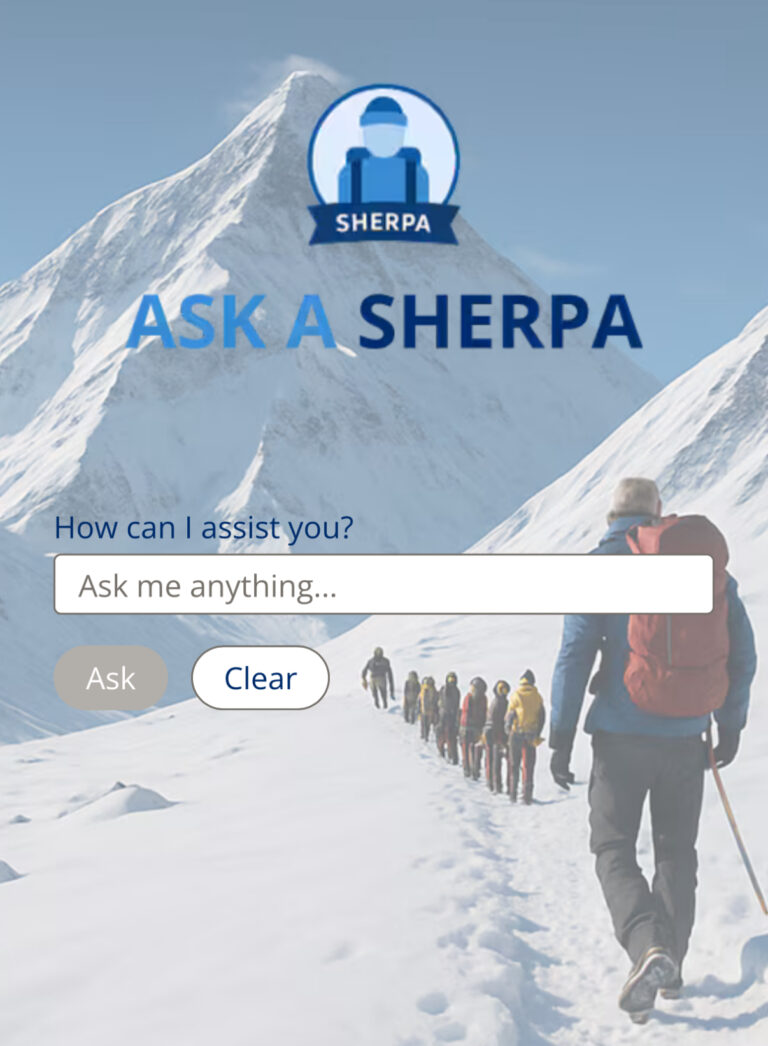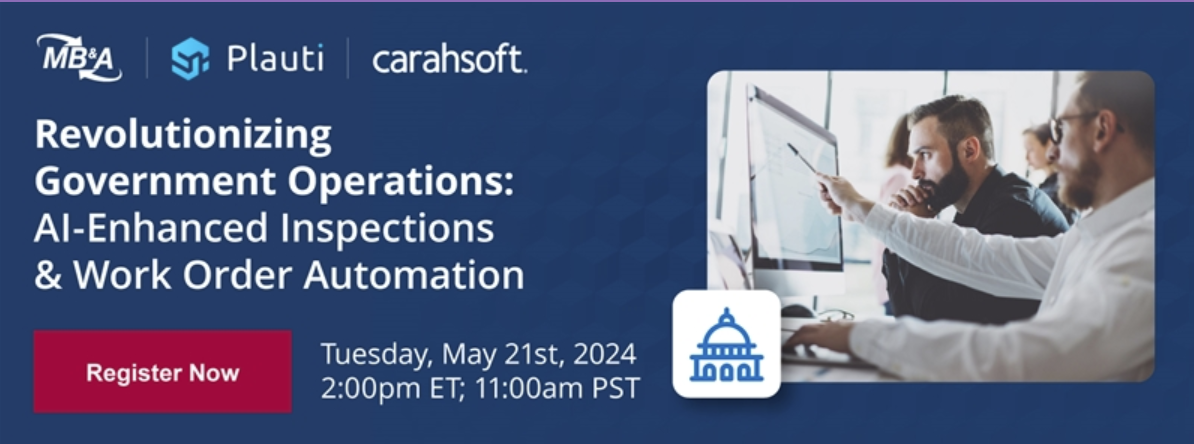A new approach to a Salesforce Based CoE for Accelerating Government Modernization
Modernizing federal IT doesn’t just mean replacing legacy systems; it means rethinking how missions are delivered, how data drives decisions, and how quickly secure applications can be deployed to serve citizens and warfighters.
Through enablement and partnership on distinct projects with the Department of Veterans Affairs (VA) and the United States Air Force (USAF), Millsapps, Ballinger & Associates (MB&A) has developed and launched a repeatable, low-code/no-code (LC/NC) Center of Excellence (CoE) model that transforms how government builds, governs, and sustains mission applications at scale.
A Platform Model Built for Mission Velocity
At the VA’s Digital Transformation Center (DTC) and on the USAF’s A3 Operations Enterprise Architecture (OPS EA) initiative, MB&A assisted in introducing a scalable CoE framework built on Salesforce and including other agency-specific secure enterprise platforms. This agile model allows agencies to:
- Launch applications in weeks, not years
- Enforce compliance and governance from day one
- Guide mission teams with embedded technical mentorship
- Reduce reliance on disconnected, high-cost legacy systems
- Enable users to adopt AI and other emerging technologies faster
Rather than simply digitizing existing forms or workflows, MB&A’s CoEs help agencies rethink how services are delivered, introducing reusable design patterns, secure integration pipelines, and human-centered service delivery models.
The App Factory Model: Mission-Aligned Mentorship
Central to this modified CoE model is the “Sherpa” approach, incorporating expert, embedded teams that guide internal stakeholders from concept to sustainment. MB&A deployed “Pod” “Sherpa” teams, consisting of architects, administrators, developers, and testers, who were embedded directly with agency line-of-business teams.
These Sherpas help users and mission owners scope needs, ensure ATO alignment, and move from intake to deployment with speed and confidence.
This approach doesn’t just speed up delivery; it builds digital fluency within the organization itself. It even leverages modern AI tools similar to our Ask A Sherpa Assistant. Ask a Sherpa is an AI guide to leveraging a Salesforce-based Center of Excellence (sometimes referred to as an “App Factory”). It offers onboarding, intake, and development best practices to help teams prepare for a secure, scalable model used across federal and defense agencies.
By leveraging this App Factory approach, users can modernize applications and reduce bloated tech stacks. By embedding compliance in the process, change agents can focus on harnessing emerging technologies and building applications that transform user experiences.

Platform Governance:
Security Without Slowing Down
Both the VA and the USAF needed more than speed. They needed confidence and enablement. MB&A’s CoE model, along with internal teams and leadership guidance, enforces governance as a service (GaaS), embedding security, compliance, and audit-readiness into every app from the start.
Key platform-wide practices include:
- Automated intake and release management
- Continuous Authority to Operate (cATO) alignment and documentation support
- Continuous Integration/Continuous Delivery (CI/CD) pipelines to reduce manual risk in deployment
- Role-based access and reusable SDK (software development kit) components
This governance approach enables innovation at scale, supporting an environment where mission teams stay agile without bypassing oversight or introducing compliance risks.
What LC/NC CoEs Solve in Government
Problem | Solution Enabled App Factory |
Manual, spreadsheet-based workflows | Digitized data collection with integrated validation and real-time dashboards |
Slow custom development cycles | Rapid LC/NC app configuration with reusable templates |
ATO delays and security uncertainty | Pre-approved controls, automated documentation, and security scans |
Fragmented user experiences across systems | Unified portals with consistent UX and mobile-ready access |
Siloed reporting and audits | Centralized data, APIs, and real-time metrics for leadership visibility |
High cost of maintaining outdated systems | Replatforming of legacy apps onto managed, cloud-native platforms |

Mission Outcomes Delivered
- Operational Efficiency: Replatforming legacy systems into modern apps reduces manual work and creates faster service loops.
- Readiness & Resilience: Scheduling tools improve situational awareness and mission planning.
- Data-Driven Oversight: Reporting dashboards, help desk analytics, and intake transparency give leaders the insight to drive continuous improvement.
- Service Modernization: Applications enhance user interaction with the agency, from benefits to inspections to feedback, leveraging our ExAM solutions and the robust and secure Salesforce platform.
- Workforce Enablement: Due to the LC/NC nature of the solution, agencies can have internal teams build apps using certified design patterns and reusable SDKs.
A Repeatable Model for Government Modernization
This approach brings clarity and efficiency with the aim to:
- Move away from high-risk, aging platforms that require pro code to manage
- Deliver apps aligned with mission, governance, and user needs
- Create lasting internal capability, not just one-time success
- Enable and empower the service member with the latest technology to drive success and be a change agent
“You bring the mission, we bring the path to secure, scalable delivery.” – MB&A Sherpa
MB&A App Factory Model in Action
The MB&A App Factory Model includes mission-centered mentorship, where Sherpas and Pods guide internal teams from idea to implementation, accelerating delivery while building skills. Governance is built to scale, with security, ATO, and compliance embedded directly into CI/CD workflows rather than bolted on as afterthoughts. By leveraging low-code and no-code (LC/NC) solutions, agencies can digitize, modernize, and replatform hundreds of applications using reusable templates, secure SDKs, and proven design patterns. The results are tangible: apps are launched in weeks, outdated workflows are replaced, and digital capacity is expanded across the enterprise. Most importantly, this is a sustainable model and far more than a one-off delivery. It establishes a foundation that agencies can continue to build on for years to come.
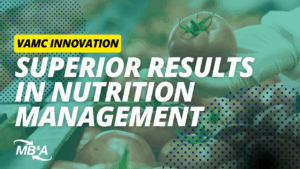
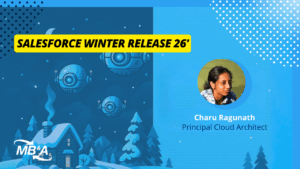
Salesforce’s Winter Release 26’: For the Admins and Developers
